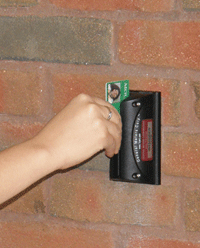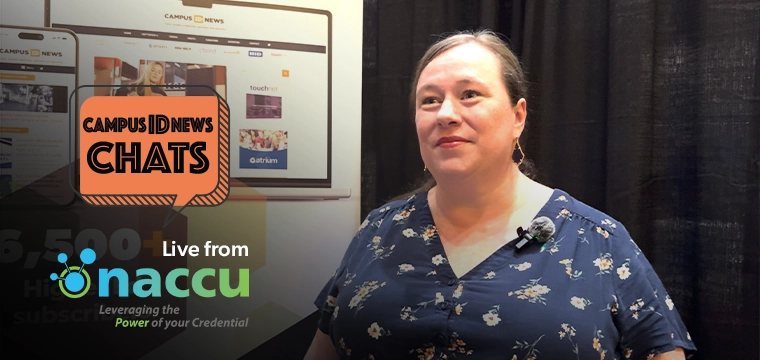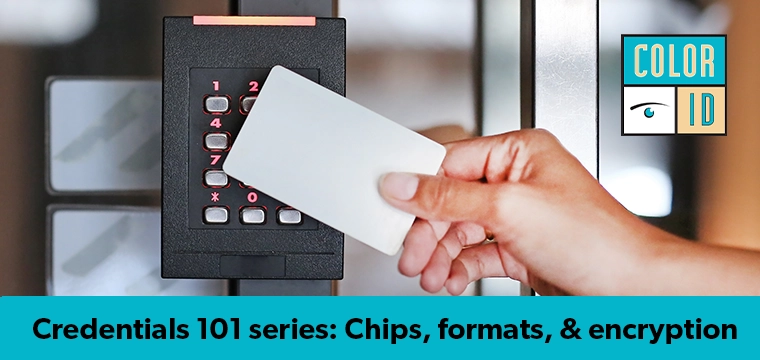By Andy Williams, Associate Editor
 Wired locks were proving difficult at Mount Holyoke College in South Hadley, Mass. Because of this the college turned to wireless doors both to provide more security for its 2,100 female students, and to give some administrative relief to campus personnel.
Wired locks were proving difficult at Mount Holyoke College in South Hadley, Mass. Because of this the college turned to wireless doors both to provide more security for its 2,100 female students, and to give some administrative relief to campus personnel.
The college’s previous encounter with wired doors hadn’t gone well, says Douglas Vanderpoel, director of the college’s Auxiliary Services. The college wanted to enable students to access their dorms with by just swiping a magnetic stripe student ID card.
The campus has installed wired doors, which involve numerous tradesmen to get set up and maintain. For example, an electrician is responsible for the conduit for the wire, the communications person pulls the wire, the carpenter hangs the door, the locksmith installs the lock and the low voltage technician connects everything.
“We had experience with wired locksets, and it was quite the fiasco to coordinate the wired doors,” Vanderpoel says. “We had done a science center with about 100 wired doors and it was a nightmare, the whole coordination piece.”
Vanderpoel cites other examples of problems the wired doors produced, from doors not closing correctly and having to be hung again, which lead to electrical wiring being cut. He adds that all of this could have been avoided with better communication and coordination. Also, and more importantly, these problems wouldn’t have existed with wireless locks.
The college had tested offline locks before. “But we had issues with those as far as updating in a timely manner,” says Vanderpoel. “We really wanted to go with the added security of card access on the doors.”
So the school turned its campus card provider: Heartland.
Mount Holyoke College, a 171-year-old school for women, is located 90-minutes west of Boston. The school was originally founded in 1837 as Mount Holyoke Female Seminary and gets its name from Mount Holyoke, the western most peak of the nearby Holyoke range in the Connecticut River valley of Western Massachusetts.
Long time General Meters customer
The college has been a General Meters customer since 1998 and continued with them following the acquisition of General Meters by Heartland Payment Systems purchased the company in 2007. The college uses a mag-stripe card for access to dorms as well as laundry and meals plans.
It also made sense to go with lockset provider Ingersoll Rand since Mount Holyoke had been beta testing the wireless devices for Heartland, says Vanderpoel.
One of the beauties of this system, says Vanderpoel, is that it’s vendor neutral. “I’m not married to someone by using the Ingersoll Rand product because it works on multiple systems, whereas in the old days you were kind of married to whomever you chose.”
The wireless locks went into the school’s new 172-bed dormitory, which opened last fall and includes both wired exterior doors and wireless interior door locks. It was a good test site because it was the school’s largest install in a single building, says Fred Emery, vice president and general manager of Heartland Campus Solutions.
Multi-swipe entry method
 The new dorm features single rooms, doubles and suites. With the suites, students actually have to swipe three times to get into their bedrooms–once to enter the dorm, again to enter the suite and a third time for the bedroom.
The new dorm features single rooms, doubles and suites. With the suites, students actually have to swipe three times to get into their bedrooms–once to enter the dorm, again to enter the suite and a third time for the bedroom.
“Students were reluctant to always have the door locked so Heartland helped us with a function called key mode, where students can set the card up to work like a key,” says Vanderpoel. “Normally, you swipe the card once to unlock the door and swipe it again to lock the door.” Students also wanted to be able to lock the door from inside where there’s no reader. So Heartland came up with another solution that allows the student to press the handle three times on the inside within five seconds. It will then lock, says Vanderpoel.
But the new dorm isn’t the only campus building now with wireless locks. “We have wireless in our office areas and other areas that are difficult to get to with wire, such as the main door of a building and a couple of exterior doors,” says Vanderpoel. There are currently about 268 wireless doors and 200-wired doors.
Despite the college’s small size, it has 20 dormitories spread across the campus’s 800 acres. “We have as many dorms as some of the bigger schools,” says Vanderpoel. In addition, a new dorm renovation is underway that will open for the second semester with 60 wireless locks.
“Our thought when we built the new dorm was that it would be the standard for all of our other dorms,” says Vanderpoel. “The next will eventually have wireless access, but those renovations will occur over a period of years.”
In addition to students, the college’s 1,000 faculty and staff also have campus cards that can access doors to which they’ve been given permission to enter.
The door controllers are manufactured by Heartland. “We’ve configured our technology so we can control 32 doors from a single controller,” says Emery. “Usually you can manage up to 16 doors with a single wireless controller, but now we’ve doubled that, bringing costs down for our clients.”
In addition, just one computer system is needed to keep tabs on all the doors, just like any wired access door, says Vanderpoel. The doors are updated every 10 minutes and every time you use it too, he adds.
The multi-door controller is attached to a transmitter that communicates wirelessly with the door lock. It’s battery operated and the database is updated in real time. “We are connecting to the database in real time. Nothing is stored on the card. The lock reader will send to the transmitter which, through the controller, will check with the database to see if that person has rights to get into that door.”
The locks work in the 900 MHZ range, rather than the normal 2.4 MHZ normally associated with WiFi. “It’s called a spread spectrum system. It encrypts but also helps with any interference. It can transmit on one frequency and receive on another,” says Vanderpoel. “It also allows for it to transmit through walls easier.”
The student’s mag stripe card, once swiped, “is read and sent to the server and the server comes back with a pass or fail,” he says.
No power? No problem
 If network connection is lost, such as if the power goes out, the lock and controller can store local information, says Emery. In addition, the cards can be checked against a local list until the network connection is regained.
If network connection is lost, such as if the power goes out, the lock and controller can store local information, says Emery. In addition, the cards can be checked against a local list until the network connection is regained.
All the exterior doors in the new dorm are wired because they will handle more people and have more functionality than a wireless door. “An offline wired door can hold 3,000 accounts, while a wireless door (suitable for a dorm’s interior rooms) can only hold 20 accounts,” says Vanderpoel.
The college also has video surveillance tied to the doors. “When alarms go off, we can pull up video feeds in that area,” Vanderpoel adds. “We also have door a-jar alarms but they’re not set to go off that quickly.”
Besides ingress and egress, the Mount Holyoke magnetic stripe card can be used in vending, laundry and meal plans as well as at 10 to 12 off-campus merchants, says Vanderpoel. “We’re probably at a limit with our off campus program. The next step is to let Heartland handle it with its Give Something Back Network.”
What’s next for Mount Holyoke? “Doug really pushes the envelope of the system,” says Emery. “He’s constantly seeking new ways to use the card system and giving us ideas.”




